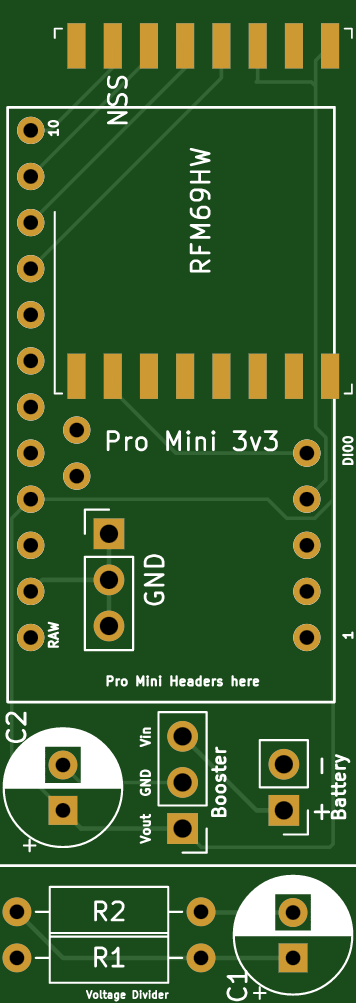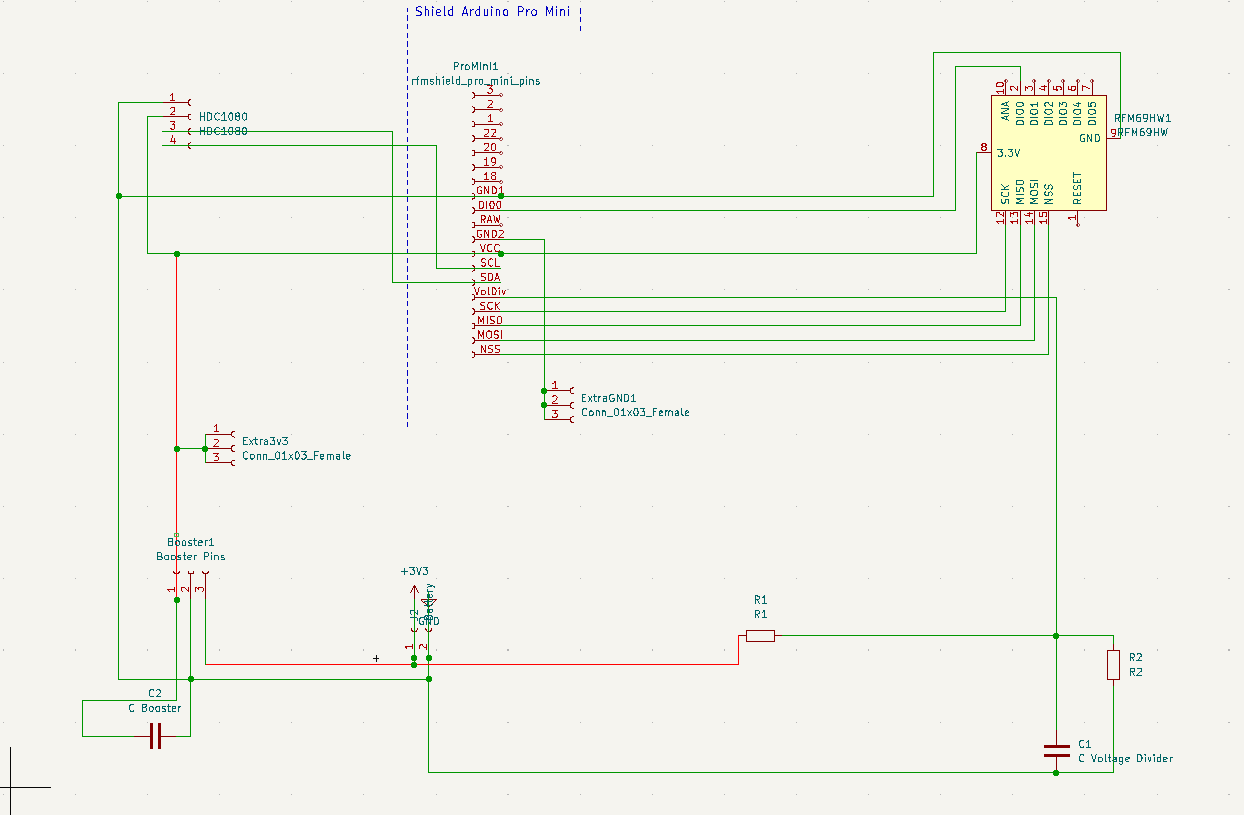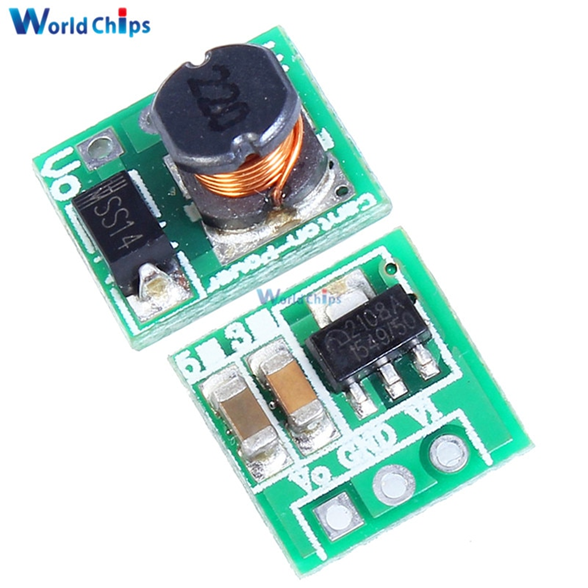WIP: My first PCB: Arduino Pro Mini + RFM69 small node (feedback wanted)
-
Hi,
To increase the WAF of my door/window sensors I created this small PCB. It connects a RFM69 to an Arduino Pro Mini with the lowest footprint I could come up with. There is additional space for a booster and a voltage divider though the voltage divider is optional (Just cut it if you don't need it).
Criticism/Feedback and everything in between is very much welcome since I literally have no idea what I am doing and I hope somebody can point out issues before I order my first batch. So: so far this is untested, please don't order it until I got my hands on the first batch.
I was also hoping that somebody could tell me how to set up the project so that mysensors gets a few dollars for every ordered batch, I've seen other projects do that and I want to give back to the community too.
If, unexpectedly, there are no issues with the PCB the next step in the project will be to create a 3D-printable enclosure (I am leaning towards tinkercad, but again, I have no idea what I am doing and I am open to suggestions).


-
Hi,
To increase the WAF of my door/window sensors I created this small PCB. It connects a RFM69 to an Arduino Pro Mini with the lowest footprint I could come up with. There is additional space for a booster and a voltage divider though the voltage divider is optional (Just cut it if you don't need it).
Criticism/Feedback and everything in between is very much welcome since I literally have no idea what I am doing and I hope somebody can point out issues before I order my first batch. So: so far this is untested, please don't order it until I got my hands on the first batch.
I was also hoping that somebody could tell me how to set up the project so that mysensors gets a few dollars for every ordered batch, I've seen other projects do that and I want to give back to the community too.
If, unexpectedly, there are no issues with the PCB the next step in the project will be to create a 3D-printable enclosure (I am leaning towards tinkercad, but again, I have no idea what I am doing and I am open to suggestions).


@kiesel Looks like you are well on your way.
If you post a schematic, you'll likely get more feedback.
If you are using one of those Chinese step up converters to 3.3V, I found I had to add a 1 uF cap on Vin to get good performance at no load.
Most designs I've seen also have a 0.1 uF decoupling cap at the power connections to the radio.
I can't tell where you are connecting the door switch, directly to an unused pins on the pro mini?
One limitation to the pro mini is that you only have 2 interrupts and 1 is used for the radio, leaving you 1 for your project, which is probably fine for your application.
If you used a pro micro (32U4) instead, you would have 5 interrupts, leaving 4 for your project. And I don't think I've ever seen an rfm69 board for the pro micro, so it would be a first. Just a thought. -
@kiesel Looks like you are well on your way.
If you post a schematic, you'll likely get more feedback.
If you are using one of those Chinese step up converters to 3.3V, I found I had to add a 1 uF cap on Vin to get good performance at no load.
Most designs I've seen also have a 0.1 uF decoupling cap at the power connections to the radio.
I can't tell where you are connecting the door switch, directly to an unused pins on the pro mini?
One limitation to the pro mini is that you only have 2 interrupts and 1 is used for the radio, leaving you 1 for your project, which is probably fine for your application.
If you used a pro micro (32U4) instead, you would have 5 interrupts, leaving 4 for your project. And I don't think I've ever seen an rfm69 board for the pro micro, so it would be a first. Just a thought.Thank you for your feedback!
I have (or at least I think) a decoupling cap on the pcb (C2). And you are right, I should have added the schematics from the start.
I tried doing it on openhardware.io but now the pics of the pcb itself show an older version (the schematics are fine though, I'll add them here too).
I added pins for a HDC1080 temperature/humidity sensor, because that's what I'll probably end up adding anway.
1 interrupt should be all that I need, but if I need more I'll probably use this workaround. But thank you for letting me know about the micro, didn't even know that existed :)
-
@kiesel Thanks for the schematic.
For the decoupling cap, it should be as close to the 3.3V & Gnd pins of the radio as possible.
Keep us posted, thanks.
